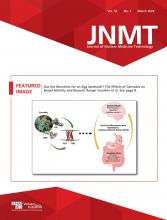Abstract
Dual-energy x-ray absorptiometry (DXA) is an accurate means to assess bone mineral density (BMD), determine the risk of a fragility fracture, and monitor response to therapy. Despite its seemingly straightforward nature – the review of two-to-three non-diagnostic images and a few automatically generated numbers – the proper performance and interpretation of DXA can often be complex. It is complex because it is highly dependent on many factors, such as image acquisition, processing, analysis, and subsequent exam interpretation. Each step is subject to potential errors, artifacts, and diagnostic pitfalls; hence meticulous attention must be paid to the technique by both the technologist and interpreting physician to provide high-quality results and, in turn, maximize the exam's clinical utility. This article is part 1 of a two-part series. Part 1 will begin with a review of bone physiology and osteoporosis etiology, followed by a discussion of the principles underlying DXA and the technical procedure. Part 2 will focus on DXA interpretation and discuss scanning pitfalls and clues to recognizing issues and improving scan quality.







